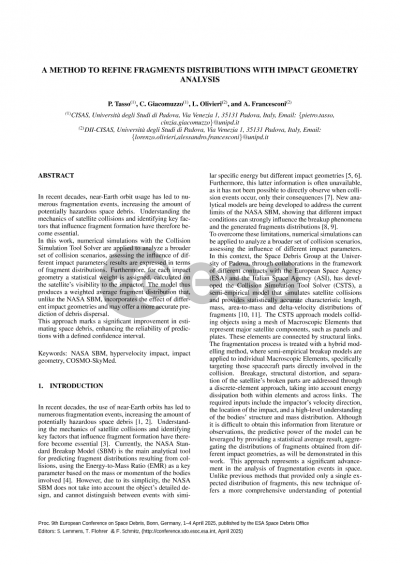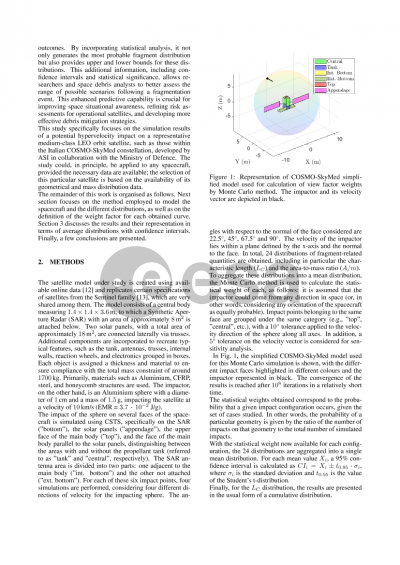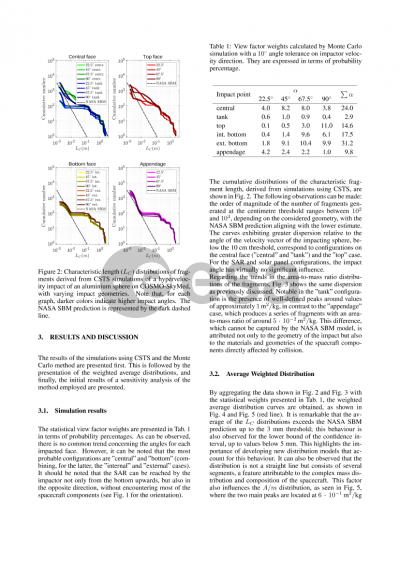Document details

Abstract
In recent decades, near-Earth orbit usage has led to numerous fragmentation events, increasing the amount of potentially hazardous space debris. Understanding the mechanics of satellite collisions and identifying key factors that influence fragment formation have therefore become essential. Currently, the NASA Standard Breakup Model (SBM) is the main tool for predicting fragment distributions resulting from collisions, using the Energy-to-Mass Ratio (EMR) as a key parameter based on the mass or momentum of the bodies involved. However, due to its simplicity, the NASA SBM cannot differentiate between events with similar specific energy but different impact geometries; in addition, this last information is often unavailable, as up to date it was not possible to directly observe when collision events occur, but only their consequences.
To overcome these limitations, numerical simulations can be applied to analyze a broader set of collision scenarios, assessing the influence of different impact parameters. In this context, the Space Debris Group at the University of Padua has developed the Collision Simulation Tool Solver (CSTS), a semi-empirical model that simulates satellite collisions and provides statistically accurate fragment distributions.
This study presents a simulation of a potential hypervelocity impact on a satellite from the Italian COSMO-SkyMed constellation, developed by the Italian Space Agency (ASI) in collaboration with the Ministry of Defence. The simulation results include fragment distributions by characteristic length, area-to-mass ratio, and relative velocity. Each impact geometry is assigned a statistical weight, calculated based on the satellite's visibility to the impactor and assuming a uniform distribution of impactor velocity directions. The model thus produces a weighted average fragment distribution that, unlike the NASA SBM, incorporates the effect of different impact geometries and may offer a more accurate prediction of debris dispersal. This approach marks a significant improvement in estimating space debris, enhancing the reliability of predictions with a defined confidence interval.
Preview







